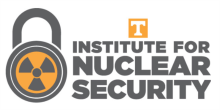Author ORCID Identifier
https://orcid.org/0000-0003-0933-304X
Abstract
A mobile radiological search system (MRSS) is frequently used in nuclear security to interdict illicit nuclear material. One difficulty an MRSS faces is in characterizing its detectors’ background responses, particularly in its neutron counter(s). This difficulty adds complications to identifying the presence of neutron-emitting radiological materials during an operation. Fortunately, previous work has identified a power law relationship between muons registered by the MRSS’s gamma detectors and background neutrons. This relationship can be applied to estimate the MRSS’s background neutron count rate using that muon count rate. To test the usability of such an estimate, an MRSS was used to sweep a parking garage that had an 886 kBq 252Cf source present on various levels. A moving average of the MRSS’s muon count rate was used to estimate the background neutron count rate, and that dynamic estimate was compared against the observed neutron count rate to determine whether an alarm should occur. For a “control” method, a similar comparison was made between the observed neutron count rate and a constant estimate of the neutron background, where the latter came from a 6-minute measurement of the neutron background outside the parking garage. The results showed that the dynamic estimate of the neutron background performed as well as the constant estimate when identifying whether the 252Cf was present, particularly when the MRSS was on the same level as the material. In many cases, the dynamic estimate produced stronger evidence in favor of an alarm than the constant estimate, and the dynamic estimate was also more likely to produce an alarm when the MRSS was on a level adjacent to the 252Cf. In addition to these results, the dynamic method appeared to have similar performance as the constant method when outside the parking garage. All of these data indicates that applying the neutron–muon power law relationship improves an MRSS’s sensitivity to manmade neutron sources in extreme environments (such as a parking garage or urban center) while maintaining its sensitivity in more normal, open environments.
Recommended Citation
Wagner, Jackson N. and Marianno, Craig
(2023)
"Tests of a Gamma Spectrometer-Neutron Counter Relationship as a Neutron Alarm Metric in Mobile Radiation Search Systems,"
International Journal of Nuclear Security:
Vol. 8:
No.
1, Article 10.
Available at:
https://trace.tennessee.edu/ijns/vol8/iss1/10
Creative Commons License

This work is licensed under a Creative Commons Attribution 4.0 International License.


